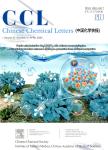A highly sensitive fluorescent probe for tracking intracellular zinc ions and direct imaging of prostatic tissue in mice
A highly sensitive fluorescent probe for tracking intracellular zinc ions and direct imaging of prostatic tissue in mice作者机构:State Key Laboratory of Bioreactor EngineeringShanghai Key Laboratory of Chemical BiologySchool of PharmacyEast China University of Science and TechnologyShanghai 200237China Department of RadiologyJiangsu Province HospitalFirst Affiliated Hospital of Nanjing Medical UniversityNanjing 210029China
出 版 物:《Chinese Chemical Letters》 (中国化学快报(英文版))
年 卷 期:2020年第31卷第11期
页 面:2933-2936页
核心收录:
学科分类:07[理学] 070302[理学-分析化学] 0703[理学-化学]
基 金:the National Natural Science Foundation of China(Nos.21878088,81701760,21476077) Key Project of the Shanghai Science and Technology Committee(No.18DZ1112703) Science and Technology Project of Jiangsu Province of China(No.BK20171086)for financial support。
主 题:Fluorescent probe Zinc ion Prostate cells Naphthalimide In vivo imaging
摘 要:A highly sensitive fluorescent sensor ZnDN was designed,synthesized and used for tracking intracellular zinc ions in various living cells and direct imaging of prostatic tissue in mice.ZnDN was prepared from the heterocyclic-fused naphthalimide fluorophore,and the zinc receptor,N,N-bis(2-pyridylmethyl)ethylenediamine(BPEN).Upon addition of Zn2+to the solutions of ZnDN,a remarkable fluorescence enhancement was observed,which could be attributed to the photo-induced electron transfer(PET)mechanism.Since ZnDN exhibited high sensitivity toward Zn2+in phosphate buffer solution,with a limit of detection of 4.0 x 10-9 mol/L,it was further applied for the imaging of exogenous and endogenous Zn21 in different living cells.Living cells imaging experiments suggested that ZnDN could image the changes of intracellular free zinc ions,and could be used for two-photon imaging.Moreover,flow cytometry suggested that ZnDN could distinguish cancerous prostate cells from normal cells.Animal experiments indicated that ZnDN had the potential in imaging prostate tissue in vivo.



